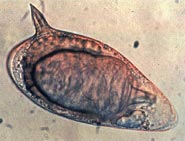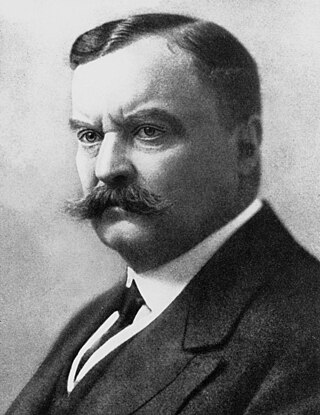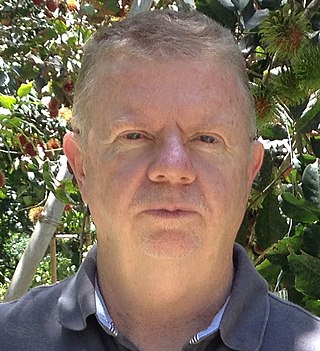Related Research Articles

Brevet Colonel Sir Samuel Rickard Christophers was a British protozoologist and medical entomologist specialising in mosquitoes.

Sir Ronald Ross was a British medical doctor who received the Nobel Prize for Physiology or Medicine in 1902 for his work on the transmission of malaria, becoming the first British Nobel laureate, and the first born outside Europe. His discovery of the malarial parasite in the gastrointestinal tract of a mosquito in 1897 proved that malaria was transmitted by mosquitoes, and laid the foundation for the method of combating the disease.

Charles Louis Alphonse Laveran was a French physician who won the Nobel Prize in Physiology or Medicine in 1907 for his discoveries of parasitic protozoans as causative agents of infectious diseases such as malaria and trypanosomiasis. Following his father, Louis Théodore Laveran, he took up military medicine as his profession. He obtained his medical degree from University of Strasbourg in 1867.

Schistosoma is a genus of trematodes, commonly known as blood flukes. They are parasitic flatworms responsible for a highly significant group of infections in humans termed schistosomiasis, which is considered by the World Health Organization as the second-most socioeconomically devastating parasitic disease, with hundreds of millions infected worldwide.

Tropical medicine is an interdisciplinary branch of medicine that deals with health issues that occur uniquely, are more widespread, or are more difficult to control in tropical and subtropical regions.

Schistosoma mansoni is a water-borne parasite of humans, and belongs to the group of blood flukes (Schistosoma). The adult lives in the blood vessels near the human intestine. It causes intestinal schistosomiasis. Clinical symptoms are caused by the eggs. As the leading cause of schistosomiasis in the world, it is the most prevalent parasite in humans. It is classified as a neglected tropical disease. As of 2021, the World Health Organization reports that 251.4 million people have schistosomiasis and most of it is due to S. mansoni. It is found in Africa, the Middle East, the Caribbean, Brazil, Venezuela and Suriname.

Major-General Sir David Bruce was a Scottish pathologist and microbiologist who made some of the key contributions in tropical medicine. In 1887, he discovered a bacterium, now called Brucella, that caused what was known as Malta fever. In 1894, he discovered a protozoan parasite, named Trypanosoma brucei, as the causative pathogen of nagana.

Sir Patrick Manson was a Scottish physician who made important discoveries in parasitology, and was a founder of the field of tropical medicine. He graduated from University of Aberdeen with degrees in Master of Surgery, Doctor of Medicine and Doctor of Law. His medical career spanned mainland China, Hong Kong, Taiwan and London. He discovered that filariasis in humans is transmitted by mosquitoes. This is the foundation of modern tropical medicine, and he is recognized with an epithet "Father of Tropical Medicine". This also made him the first person to show pathogen transmission by a blood-feeding arthropod. His discovery directly invoked the mosquito-malaria theory, which became the foundation in malariology. He eventually became the first President of the Royal Society of Tropical Medicine and Hygiene. He founded the Hong Kong College of Medicine for Chinese and the London School of Hygiene & Tropical Medicine.
The Royal Society of Tropical Medicine and Hygiene, more commonly known by its acronym RSTMH, was founded in 1907 by Sir James Cantlie and George Carmichael Low. Sir Patrick Manson, the Society's first President (1907–1909), was recognised as "the father of tropical medicine" by his biographer. He passed the post on to Sir Ronald Ross, discoverer of the role of mosquitoes in the transmission of malaria.
Sir Brian Mellor Greenwood, CBE, FRCP, FRS is a British physician, biomedical research scientist, academic, and recipient of the first Hideyo Noguchi Africa Prize.

A Schistosomiasis vaccine is a vaccine against Schistosomiasis, a parasitic disease caused by several species of fluke of the genus Schistosoma. No effective vaccine for the disease exists yet. Schistosomiasis affects over 200 million people worldwide, mainly in rural agricultural and peri-urban areas of the third world, and approximately 10% suffer severe health complications from the infection. While chemotherapeutic drugs, such as praziquantel, oxamniquine and metrifonate both no longer on the market, are currently considered safe and effective for the treatment of schistosomiasis, reinfection occurs frequently following drug treatment, thus a vaccine is sought to provide long-term treatment. Additionally, experimental vaccination efforts have been successful in animal models of schistosomiasis.
The effects of parasitic worms, or helminths, on the immune system is a recently emerging topic of study among immunologists and other biologists. Experiments have involved a wide range of parasites, diseases, and hosts. The effects on humans have been of special interest. The tendency of many parasitic worms to pacify the host's immune response allows them to mollify some diseases, while worsening others.

Sir Alimuddin Zumla,, FRCP, FRCPath, FRSB is a British-Zambian professor of infectious diseases and international health at University College London Medical School. He specialises in infectious and tropical diseases, clinical immunology, and internal medicine, with a special interest in HIV/AIDS, respiratory infections, and diseases of poverty. He is known for his leadership of infectious/tropical diseases research and capacity development activities. He was awarded a Knighthood in the 2017 Queens Birthday Honours list for services to public health and protection from infectious disease. In 2012, he was awarded Zambia's highest civilian honour, the Order of the Grand Commander of Distinguished services - First Division. In 2023, for the sixth consecutive year, Zumla was recognised by Clarivate Analytics, Web of Science as one of the world's top 1% most cited researchers. In 2021 Sir Zumla was elected as Fellow of The World Academy of Sciences.

Percy Cyril Claude Garnham CMG FRS, was a British biologist and parasitologist. On his 90th birthday, he was called the "greatest living parasitologist".

Mosquito-malaria theory was a scientific theory developed in the latter half of the 19th century that solved the question of how malaria was transmitted. The theory proposed that malaria was transmitted by mosquitoes, in opposition to the centuries-old medical dogma that malaria was due to bad air, or miasma. The first scientific idea was postulated in 1851 by Charles E. Johnson, who argued that miasma had no direct relationship with malaria. Although Johnson's hypothesis was forgotten, the arrival and validation of the germ theory of diseases in the late 19th century began to shed new lights. When Charles Louis Alphonse Laveran discovered that malaria was caused by a protozoan parasite in 1880, the miasma theory began to subside.

The Edward Jenner Medal is awarded occasionally by the Royal Society of Medicine to individuals who have undertaken distinguished work in epidemiological research.

Louis Westenra Sambon was an Italian-English physician who played important roles in understanding the causes (etiology) of diseases. He described many pathogenic protozoans, insects, and helminths including the name Schistosoma mansoni for a blood fluke. He was an authority on the classification of parasitic tongue worms called Pentastomida (Linguatulida), and one of the genus Sambonia is named after him.

Paul J Brindley is an Australian parasitologist, microbiologist, and helminthologist. He is professor of Microbiology, Immunology, and Tropical Medicine at the George Washington University.
The Sleeping Sickness Commission was a medical project established by the British Royal Society to investigate the outbreak of African sleeping sickness or African trypanosomiasis in Africa at the turn of the 20th century. The outbreak of the disease started in 1900 in Uganda, which was at the time a protectorate of the British Empire. The initial team in 1902 consisted of Aldo Castellani and George Carmichael Low, both from the London School of Hygiene and Tropical Medicine, and Cuthbert Christy, a medical officer on duty in Bombay, India. From 1903, David Bruce of the Royal Army Medical Corps and David Nunes Nabarro of the University College Hospital took over the leadership. The commission established that species of blood protozoan called Trypanosoma brucei, named after Bruce, was the causative parasite of sleeping sickness.

George Macdonald was a British physician who was Professor of Tropical Hygiene at the London School of Hygiene & Tropical Medicine. His research concentrated primarily on malaria, its epidemiology and control. He was the author of many papers on the mathematical analysis of transmission of tropical infections and the author of The Epidemiology and Control of Malaria, published in 1957.
References
- 1 2 3 4 5 "Sir Patrick Manson Medal | RSTMH". rstmh.org. Royal Society of Tropical Medicine and Hygiene. Retrieved 2022-10-15.
- ↑ "The Manson Memorial Medal" . The Lancet. 200 (5171): 777–778. 1922. doi:10.1016/S0140-6736(00)55215-5.
- 1 2 Jay, V. (2000). "Sir Patrick Manson. Father of tropical medicine" . Archives of Pathology & Laboratory Medicine. 124 (11): 1594–1595. doi:10.5858/2000-124-1594-SPM. ISSN 0003-9985. PMID 11079007.
- ↑ UCL (2022-10-19). "UCL academic receives prestigious global health award". UCL News. Retrieved 2022-10-26.
- ↑ J. W. W. Stephens (2004). "Manson, Sir Patrick (1844–1922)" . Oxford Dictionary of National Biography (online ed.). Oxford University Press. doi:10.1093/ref:odnb/34865 . Retrieved 3 February 2014.(Subscription or UK public library membership required.)
- ↑ To, Kelvin KW; Yuen, Kwok-Yung (2012). "In memory of Patrick Manson, founding father of tropical medicine and the discovery of vector-borne infections". Emerging Microbes & Infections. 1 (10): e31. doi:10.1038/emi.2012.32. PMC 3630944 . PMID 26038403.
- ↑ Pitfield, Robert Lucas (1940). "Sir Patrick Manson". Annals of Medical History. 2 (1): 22–29. ISSN 0743-3131. PMC 7942548 . PMID 33943770.
- ↑ Sambon, L.W. (1907). "Remarks on Schistosomum mansoni". Journal of Tropical Medicine and Hygiene. 10: 303–304.
- ↑ Birch, CA (1974). "Schistosoma mansoni. Sir Patrick Manson, 1844–1922". The Practitioner. 213 (1277): 730–2. PMID 4156405.
- ↑ Lescano, Andres G; Zunt, Joseph (2013). "Other cestodes". Neuroparasitology and Tropical Neurology. Handbook of Clinical Neurology. Vol. 114. pp. 335–345. doi:10.1016/B978-0-444-53490-3.00027-3. ISBN 9780444534903. PMC 4080899 . PMID 23829923.
- ↑ Yan, Chen; Ye, Bin (2013). "Sparganosis in China". In Mehlhorn, Heinz; Wu, Zhongdao; Ye, Bin (eds.). Treatment of Human Parasitosis in Traditional Chinese Medicine. Heidelberg: Springer. doi:10.1007/978-3-642-39824-7_11. ISBN 978-3-642-39823-0.(subscription required)
- ↑ Lalchhandama, K (2014). "The making of modern malariology: from miasma to mosquito-malaria theory" (PDF). Science Vision. 14 (1): 3–17. Archived from the original (PDF) on 2014-04-27.
- ↑ Manson-Bahr, P (1938). "The Jubilee of Sir Patrick Manson (1878-1938): A Tribute to his Work on the Malaria Problem". Postgraduate Medical Journal. 14 (157): 345–57. doi:10.1136/pgmj.14.157.345. PMC 2477395 . PMID 21313134.
- ↑ Dutta, A. (2009). "Where Ronald Ross (1857–1932) worked: the discovery of malarial transmission and the Plasmodium life cycle". Journal of Medical Biography. 17 (2): 120–122. doi:10.1258/jmb.2009.009004. PMID 19401518. S2CID 207200295.
- ↑ Leggat, Peter A. (2007). "The centenary of the Royal Society of Tropical Medicine and Hygiene". Annals of the ACTM. 8 (1): 1.
- 1 2 3 "The Manson Memorial Medal: Presentation to Lady Manson". British Medical Journal. 2 (3222): 611. 1922. ISSN 0007-1447. PMC 2416822 . PMID 20770873.
- 1 2 "Science Medals of Great Britain, Ireland, and the Dominions". Nature. 127 (3201): 343–345. 1931. doi: 10.1038/127343a0 . ISSN 0028-0836. S2CID 4110851.
- ↑ "Address of the President, Sir Charles S. Sherrington, at the Anniversary Meeting, November 30, 1922". Proceedings of the Royal Society of London. Series A, Containing Papers of a Mathematical and Physical Character. 102 (717): 373–388. 1923. doi: 10.1098/rspa.1923.0001 . ISSN 0950-1207.
- ↑ Corbel, M. J. (1997). "Brucellosis: an overview". Emerging Infectious Diseases. 3 (2): 213–221. doi:10.3201/eid0302.970219. PMC 2627605 . PMID 9204307.
- ↑ Robertson, Muriel (1955). "Sir David Bruce: An Appreciation of the Man and his Work". BMJ Military Health. 101 (2): 91–99. doi: 10.1136/jramc-101-02-03 (inactive 31 January 2024). PMID 14368591.
{{cite journal}}: CS1 maint: DOI inactive as of January 2024 (link) - ↑ Welburn, S. C.; Maudlin, I.; Simarro, P. P. (2009). "Controlling sleeping sickness - a review" (PDF). Parasitology. 136 (14): 1943–1949. doi:10.1017/S0031182009006416. PMID 19691861. S2CID 41052902.
- ↑ Steverding, Dietmar (2008). "The history of African trypanosomiasis". Parasites & Vectors. 1 (1): 3. doi: 10.1186/1756-3305-1-3 . PMC 2270819 . PMID 18275594.
- ↑ "List of past medal holders". Royal Society of Tropical Medicine and Hygiene.
- ↑ "Manson Medal for Tropical Medical Research". Nature. 129 (3263): 716. 13 May 1932. Bibcode:1932Natur.129R.716.. doi: 10.1038/129716b0 .